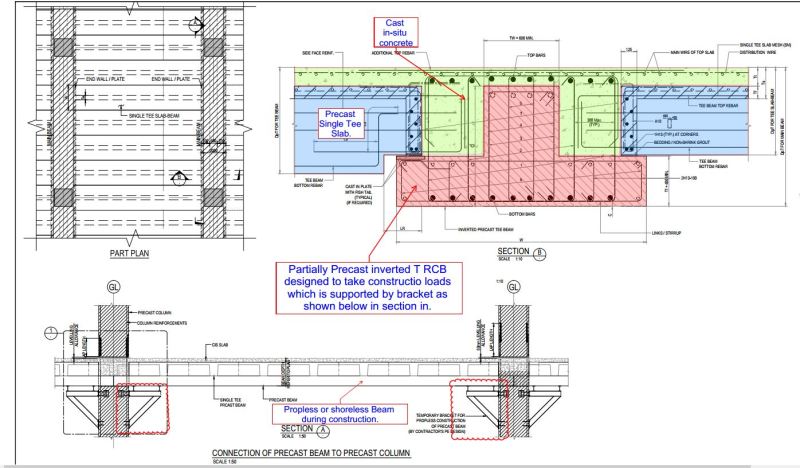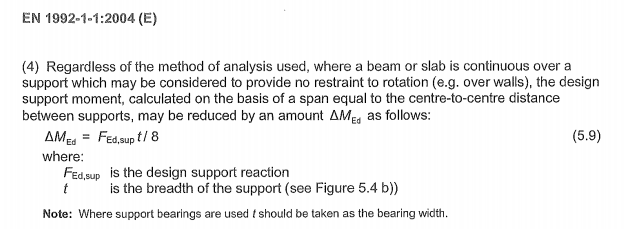struggle66
Civil/Environmental
- Jul 5, 2013
- 127
Hi Good Day Everyone
Here in Singapore authorities are pushing for less manpower whole building precast propless or shoreless construction. Please refer to the photo below.

Have you guys ever encountered this before? Is there better scheme to construct? Will it better to use Hollow-core slab instead of precast single tee and post tension beam in the place of RCB but design as simply supported RCB during construction stage.
Another question!
Here in Singapre when designing the continuos hollow core or single tee slab, designers here are using shorter continous design span as shown below. They claim that beam is so rigid that the width of the beam can be ignored in the precast continuous slab design but I think it is still the same as cast in-situ continous slab.

Thanks in advance!
Here in Singapore authorities are pushing for less manpower whole building precast propless or shoreless construction. Please refer to the photo below.

Have you guys ever encountered this before? Is there better scheme to construct? Will it better to use Hollow-core slab instead of precast single tee and post tension beam in the place of RCB but design as simply supported RCB during construction stage.
Another question!
Here in Singapre when designing the continuos hollow core or single tee slab, designers here are using shorter continous design span as shown below. They claim that beam is so rigid that the width of the beam can be ignored in the precast continuous slab design but I think it is still the same as cast in-situ continous slab.

Thanks in advance!

